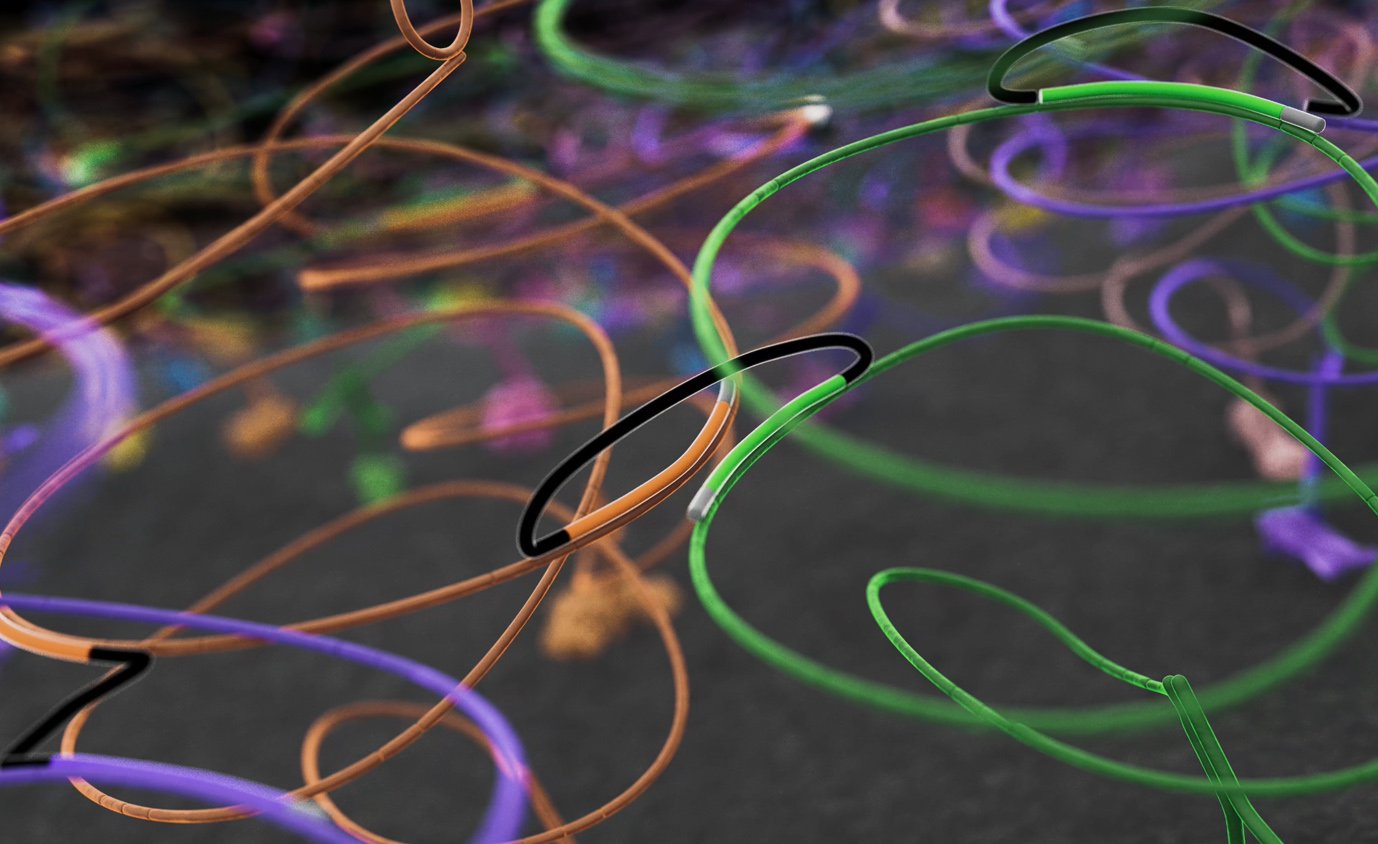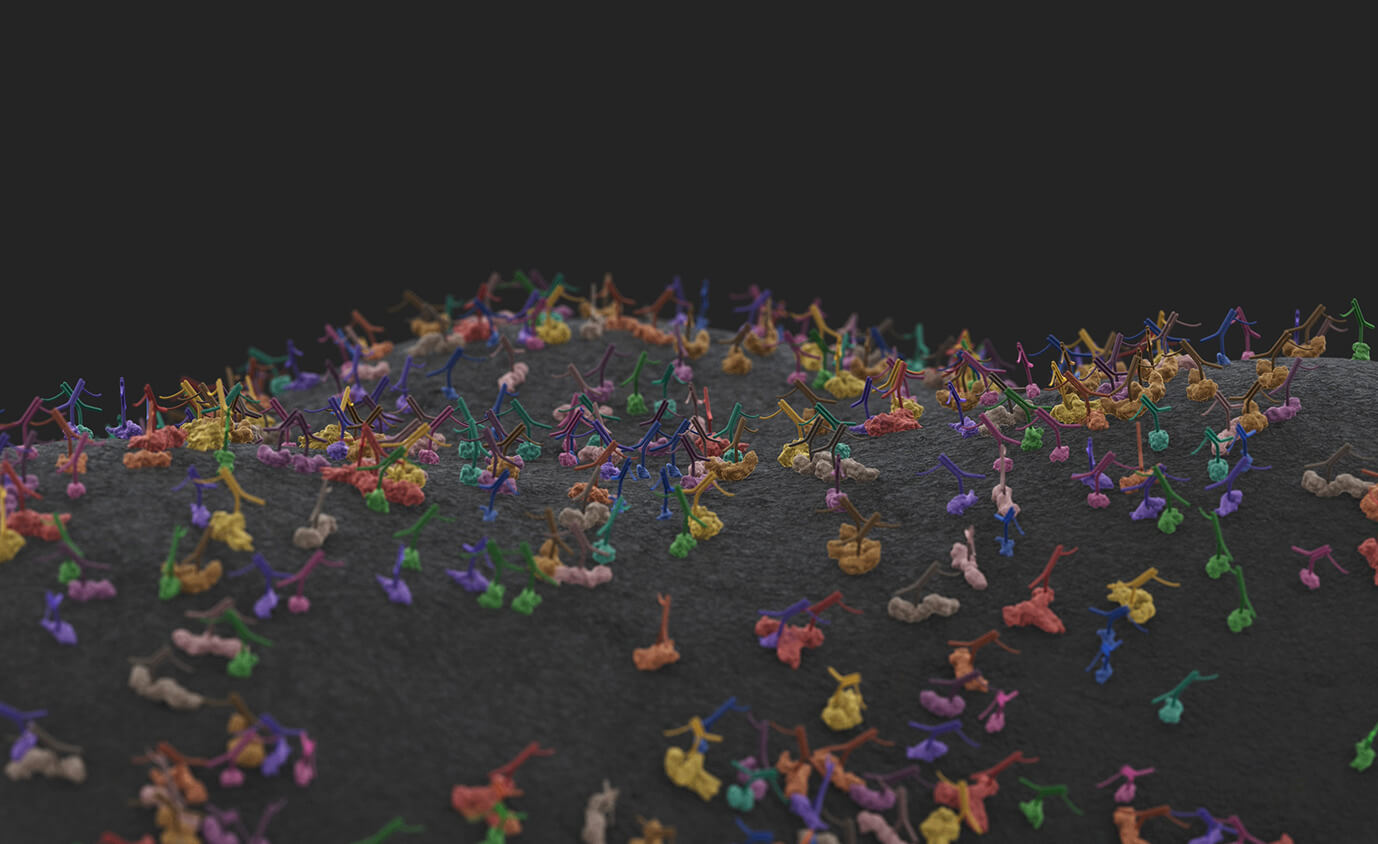Working on the nanoscale makes it a challenge to clearly visualize technology in an educational way. Pixelgen’s products are related to protein molecules, which measure only a few nanometers. At the same time, the processes taking place on the cell membrane are complex, so the method needed to be illustrated with 3D animation. With clear visualizations, Pixelgen aimed to explain their technology and communicate more effectively with their target audience of researchers.
New products and processes—like Pixelgen’s Proximity Network Assay—require new visualization approaches. Pixelgen needed a collaborative partner who could actively contribute and iterate to achieve the best results. This demanded not only expertise in 3D animation but also experience in biotechnology. Pixelgen found what they were looking for in byBrick, and today our 3D animations and illustrations form the core of the company’s scientific communication.

Before/after: Even without Pixelgen’s Proximity Network Assay, researchers know THAT proteins cover the cell surface, but not WHICH ones, WHERE they are, or HOW much of each.

The principle behind the name: When two protein strands end up close to each other, they link together, making it possible to identify and localize them.

Step by step: Pixelgen and byBrick collaborated closely, testing new iterations until achieving the optimal visualization.

Dare to simplify: Together with Pixelgen, we developed colors, forms, and abstractions that highlight only what matters—no more, no less.
Leave your contact details, and we’ll get in touch!